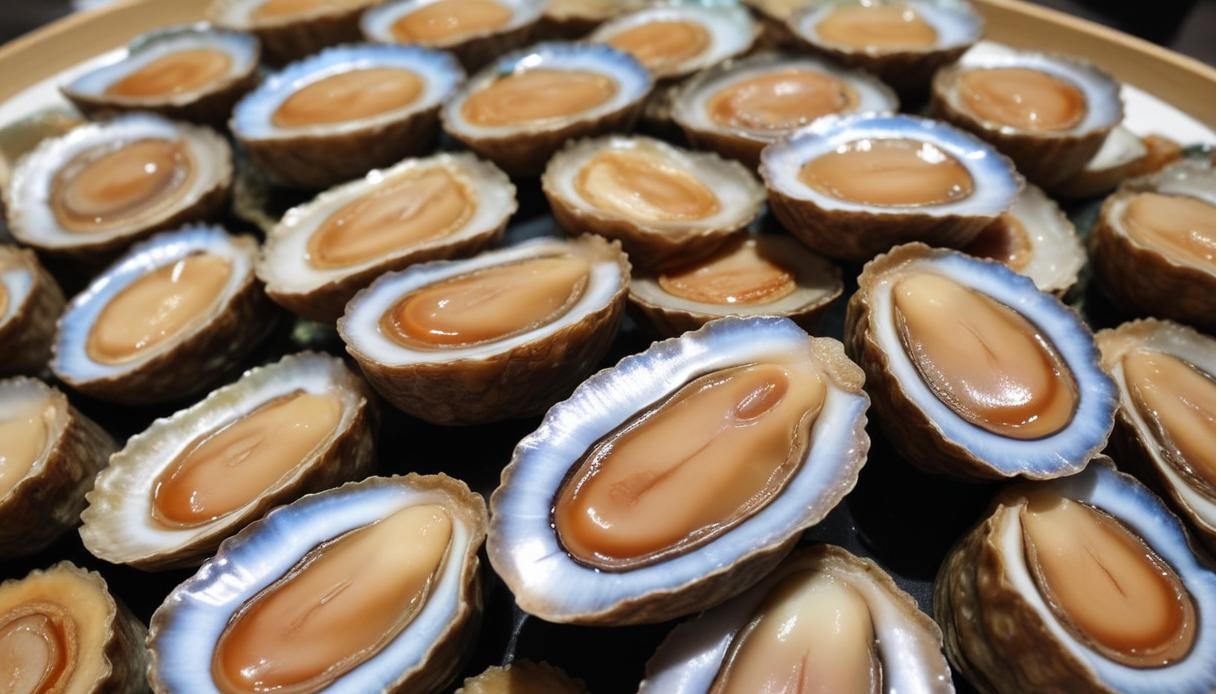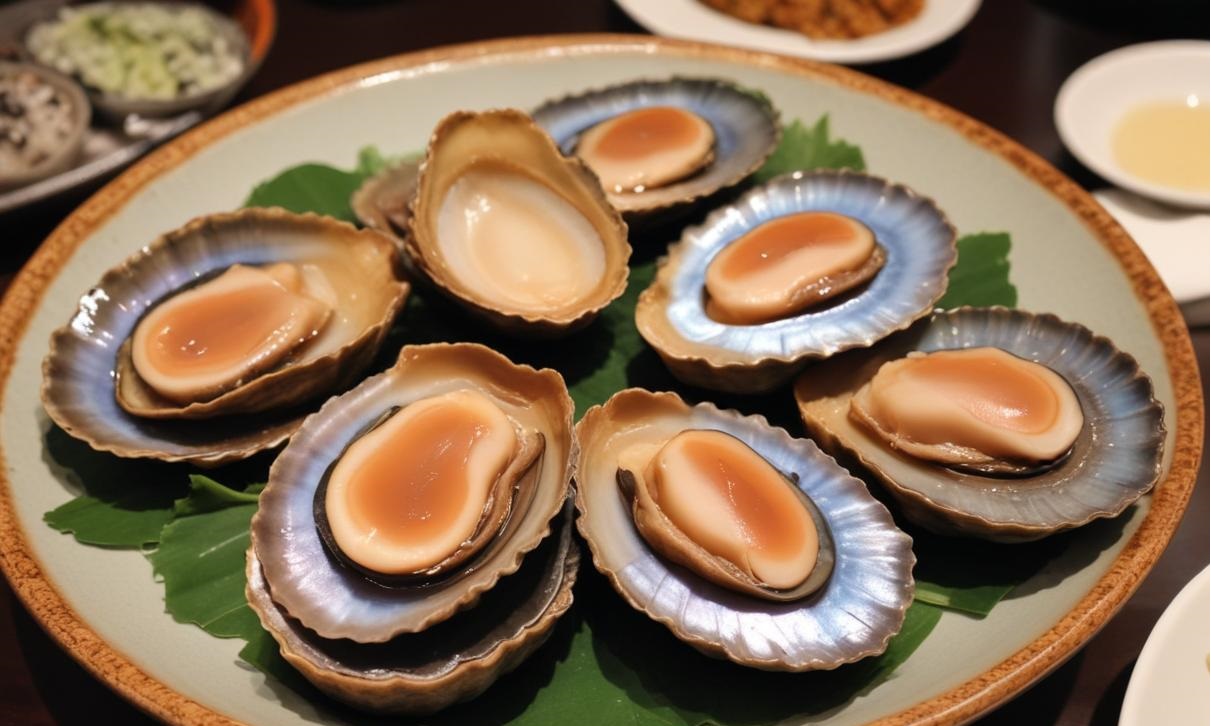Health
Abalone Shell: Facts, How to Eat, Taste, & Price

Abalone, a marine mollusk renowned for its iridescent shell and delicate flavor, holds significant cultural and culinary value across various regions. This article delves into the fascinating aspects of abalone shell, consumption methods, taste profiles, and market pricing.
Abalone Shell: Nature’s Masterpiece
The abalone shell is one of the natural designs that can be evaluated regarding its exterior aesthetics and efficiency. Externally, it has a rugged earned appearance to protect the learned from predators and strong sea currents. The outside, however, looks nothing like the inside when, in fact, the interior is a spectacle to the eyes and fascinating as they are beautiful, one of the most sought after commodities by artisans and jewelers for ages now; the material is known as the mother of pearl.
This nacreous layer is of a stratified type made of calcium layers that seem like small tiles placed in a brick pattern and embedded in a flexible protei brick. This arrangement is useful for the shell’s strength, as it will not easily fracture, and it gives the amazing effect that the shell’s color shifts depending on light and viewpoint.
The shell is hard and beautiful, so it is actively used to create decorations and jewelry and manufacture inlays for musical instruments. It’s important to remember that dust produced when cutting or grinding abalone shell is dangerous for inspiration, requiring precautions while using.
How to Eat Abalone: A Culinary Delicacy
It remains a popular ingredient in the culinary field and is known for its meat’s delicious yet soft texture. Most people know that before consuming Abalone, it has to be well preAbaloneo to improve its texture and flavor. Preparing the eggs involves peeling the meat from the shell, then opening up the eggs to remove the internal organs and washing them to ensure no traces of sand or sand like substances are inside.
Preparative techniques for Abalone in the Japanese kitcheAbaloneten are kept simple, and one of the most popular ways to prepare this delicacy is sashimi, which is thinly sliced raw meat. In South Korea, there is Jeonbok, which is Abalone steamed as a standalone and is known as jeonbokjuk, and there is also Jeonbok with butter grilling. Abalone can be commonly found in lengthy cooked Chinese meals, including special feasts that present prosperity and fortune.
Abalone is cooked through breading and pan fried or frying, sautéing, or used in pasta. Overcooking is something that should be strictly eliminated, as it results in making the meat material incredibly tender.

Taste Profile of Abalone: A Subtle Ocean FlavorAAbalone’s flavors ares swee,and similarr tothose of seafood.dAa,n,d has a briny note, as if the taste reflects the sea itself. It Itsand slightly sweet taste complements several spices and gravies. The body is hard but at t enough and has a specific kind of chewing feel, differentiating it from other bivalve mollusks.
When consumed raw, like sashimi, sushi retains the natural flavor associated with a clean and fresh taste. They are brought out through the kind of preparation, as when one fries or barbecues in butter, which adds a buttery fullness to the dish, contrasting with the natural sweetness from steaming. High adaptability to different culinary preparations gives Abalone great relevance to AsiAbalonEurope food, which is considered by gourmets as a luxury first class product among seafood.
Pricing of Abalone
Abalone is one of the exotic species within the fish market chain, and pit prices depict this reality. The relative cost of a serving depends on the species of fish, size, and origin, as well as whether a fish was captured from the wild or was farmed. With wild Abalone being relatively scarce as a result of overexploitation and closure of many exploitation areas, it is relatively more expensive than farmed types.
In Singapore, the market offers different types of products to fit various customers’ price ranges. For example, canned abalone products may vary in price from low to high, and cheaper brands are available. Amazon’s online store sells products like Kona Abalone Canned Ezo Abalone Natural Flavor Small Can (50g) for about $23. At the same time, fresh abalone steaks sourced from specialty seafood suppliers cost $61.95 for a pack of four.
Prices may vary depending on availability in the market, time of year, and from one area to another, and it is worth highlighting the prices as follows. Consumers should also think about the legislation and moral issues that may be connected with the abalone gathering as some types of this fish are in threat of extinction. Consumers should also know about the legal and ethical issues that are associated with searching for Abalonelone as some species are inAbalonest endangered and buying it consumers should do in the store can be regarded as legal.
The Bottom Line
Related to seasnaiAbalonealone is a stunning mollusk; Abaloneell is dazzling,g and the meatis considered a gourmet fine dining food. It has a very special taste and consistency, and for this reason, it has found its way into preparing many recipes in various parts of the globe. Yet, as it stands being classified under this luxury niche, the consumer ought to make informed decisions when using this to get a product that provides not only culinary worth but also the protection of this scarce resource.

-

 Life Style10 months ago
Life Style10 months agoWho is Amra Nor Jenkins? The Untold Story About Jeezy’s Daughter
-

 Celebrity6 months ago
Celebrity6 months agoThe Private World of Marina Pearl LeBlanc, Matt LeBlanc’s Only Child
-

 Entertainment10 months ago
Entertainment10 months agoWhat is Shoujo Ramune? The Comprehensive Guide
-

 Celebrity11 months ago
Celebrity11 months agoThe Untold Truth of William Mapel: A Deep Dive into His Personal Life
-

 News11 months ago
News11 months agoRanch World Ads Review: Everything You Need to Know
-

 Celebrity11 months ago
Celebrity11 months agoThe Untold Story of Denika Kisty: Her Family, Net Worth, and More
-

 Celebrity11 months ago
Celebrity11 months agoWho Is Stephanie Sarkisian? All You Need To Know AboutSteve Sarkisian’s Ex-Wife
-

 Life Style10 months ago
Life Style10 months agoJill Wagner Accident: Life and Health After Accident











